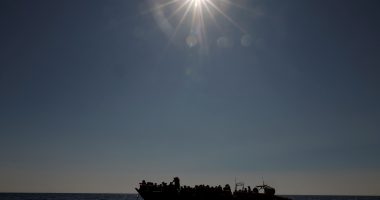There’s been a lot of talk about “friendshoring” since Treasury secretary Janet Yellen first used the word in 2022. The concept is one of the key ways in which the Biden administration’s approach to trade and supply chain resiliency differs from that of Donald Trump. But it’s been difficult to get beyond talk, in part because the US hasn’t had a clear, granular picture of its own capacity in key industrial sectors — let alone that of its friends.
That’s starting to change. Last year, the commerce department launched a Supply Chain Center, to work with private sector partners on supply chain mapping. It has now begun quietly trialing a supply chain exposure tool that crunches trade and customs data from the US and many of its allies to create a detailed picture of where risks and opportunities lie.
The idea is to figure out how healthy — or not — these countries really are when it comes to supply chains in a variety of sectors, such as semiconductors, critical minerals, consumer electronics and so on. How quickly could critical inputs be replaced from allies in case of war, a pandemic or a natural disaster? How much do they depend on others from a single nation, such as China or Russia?
“We wanted to create a common operating picture and shared set of facts for supply chain discussions with allies in Europe or nations that are part of the Indo-Pacific Economic Framework,” says assistant secretary of commerce for industry and analysis Grant Harris, who created the new centre. “Our baseline for those discussions too often had been, ‘we should all do more,’ and then things would stall, because we didn’t have the data for a more detailed conversation.”
It sounds like a no-brainer, but as someone who’s been concerned with supply chains since the Rana Plaza factory collapse in Bangladesh in 2013, this is the most granular US government effort that I’ve seen so far to map global chokepoints in a broad range of commercial sectors. (I’d caveat this by noting that the departments of defence and energy have their own efforts targeted to their specific areas of interest.) According to several supply chain experts I spoke to, no other nation — apart from China — is doing more in terms of such cross-border mapping.
The Biden White House’s 100-day report on supply chains did call out general areas of vulnerability for the US, such as in chips, critical minerals and pharmaceuticals. And much of the administration’s subsequent legislation, most notably the Chips and Science Act, has been about buffering them. But that’s not the same as seeing specific areas of vulnerability several layers down the ladder.
The commerce tool, which I tried last week, can quickly show a user that, for example, while IPEF nations as a whole may have a secure-seeming 33 per cent market share of a crucial electronics component, in fact the majority of that number comes from a single country that imports most of its inputs from China.
Of course, there are limits to what can be seen in real time using broad categories of trade data, some of which haven’t been updated for decades. Commerce officials and supply chain experts alike would also say that it’s impossible to create a complete 360-degree map, even in the most critical sectors, in part because business isn’t (yet) required to turn over proprietary information, such as their bill of materials which show all product inputs.
“If you walk into Home Depot and ask what per cent of all this stuff is from China, the answer is ‘a lot’,” says Willy Shih, a Harvard Business School professor who has been studying global supply chains for decades. “Who knew that roofing nails used in nail guns all came from suppliers just outside Beijing?”
Of course, US officials are far less worried about roofing nails than electrical steel or broadband infrastructure. But the idea behind the new tool is to begin to chart the major risk hubs so conversations with trade partners can become more strategic and effective. Could that large chunk of antimony ore (needed for battery alloys) that fills global demand be replaced by Australian supply? Could more laptop components be sourced in the Netherlands?
Shih and others, such as Christopher Gopal, a supply chain expert who sits on the DoD’s Defense Business Board, see value in risk mapping. But they also note that ultimately, real demand signals will be required to create long-term, economically sustainable shifts in global supply chains. Knowing where supply lies is one thing — making it economically viable to produce things in rich countries is another.
That’s where friendshoring could help. One could imagine, for example, a partnership around electric vehicles or clean tech that would involve sourcing critical minerals in Australia, leveraging Japanese production capacity and using the power of the US consumer market to create a viable product that can compete in the world marketplace.
As more and more is known about where things are produced globally, and how, it may become possible to have a less nationalistic, more co-operative conversation about how to create global supply chain resiliency. It’s a goal that holds bipartisan appeal in the US, where the Promoting Resilient Supply Chains Act, which aims to codify risk mapping, passed the House unanimously a couple of weeks ago. Getting rid of chokepoints is, it seems, something we can all agree on.
rana.foroohar@ft.com
Also Read More: World News | Entertainment News | Celeb News









